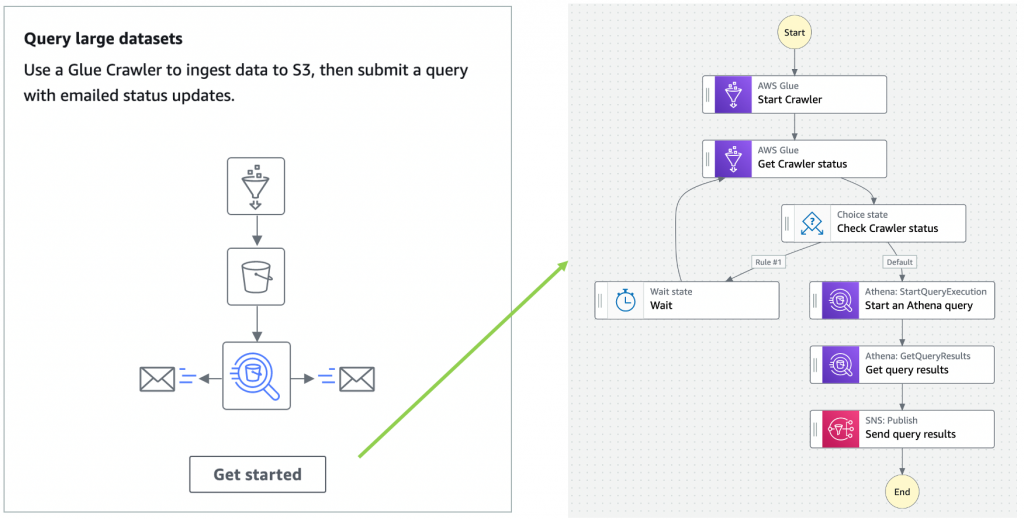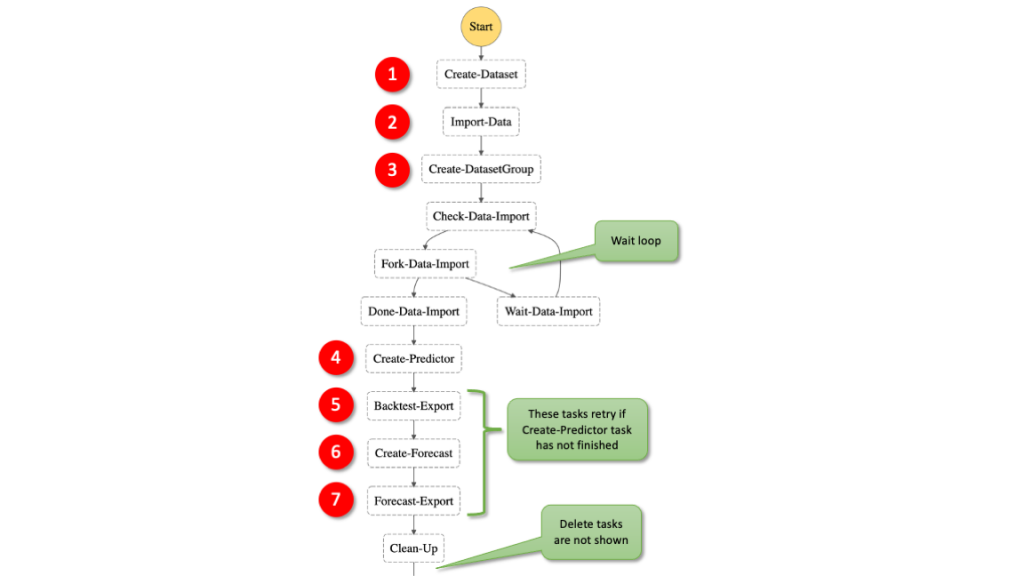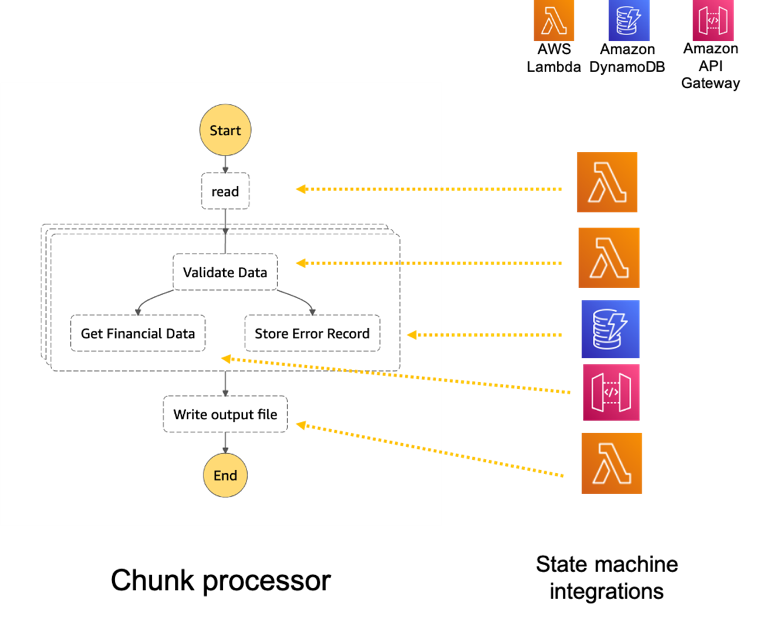AWS Compute Blog
Category: AWS Step Functions
Composing AWS Step Functions to abstract polling of asynchronous services
This blog post describes how to compose a nested Step Functions workflow, which asynchronously manages a custom service using the polling mechanism.
Building a serverless image catalog with AWS Step Functions Workflow Studio
This blog post demonstrates how to implement a serverless image cataloging pipeline using Step Functions Workflow Studio. By orchestrating AWS API actions and flow states via drag and drop, you can process user-generated images. This example checks images for appropriateness and generates tags based on their content without custom application code.
Mocking service integrations with AWS Step Functions Local
This post is written by Sam Dengler, Principal Specialist Solutions Architect, and Dhiraj Mahapatro, Senior Specialist Solutions Architect. AWS Step Functions now supports over 200 AWS Service integrations via AWS SDK Integration. Developers want to build and test control flow logic for workflows using branching logic, error handling, and retries. This allows for precise workflow execution with deterministic […]
Using the circuit breaker pattern with AWS Step Functions and Amazon DynamoDB
This post is written by Anitha Deenadayalan, Developer Specialist SA, DevAx Modern applications use microservices as an architectural and organizational approach to software development, where the application comprises small independent services that communicate over well-defined APIs. When multiple microservices collaborate to handle requests, one or more services may become unavailable or exhibit a high latency. […]
ICYMI: Serverless Q4 2021
Welcome to the 16th edition of the AWS Serverless ICYMI (in case you missed it) quarterly recap. Every quarter, we share all of the most recent product launches, feature enhancements, blog posts, webinars, Twitch live streams, and other interesting things that you might have missed! In case you missed our last ICYMI, check out what […]
Visualizing AWS Step Functions workflows from the Amazon Athena console
Amazon Athena console now provides an integration with AWS Step Functions’ workflows. You can use the provided patterns to create and visualize Step Functions’ workflows directly from the Amazon Athena console. Step Functions’ workflows that use Athena’s optimized API integration appear in the Athena console. To learn more about Amazon Athena, read the user guide.
Build workflows for Amazon Forecast with AWS Step Functions
This post shows how to create a Step Functions workflow for Forecast using AWS SDK service integrations, which allows you to use over 200 with AWS API actions. It shows two patterns for handling asynchronous tasks. The first pattern queries the describe-* API repeatedly and the second pattern uses the “Retry” option. This simplifies the development of workflows because in many cases they can replace Lambda functions.
Creating AWS Serverless batch processing architectures
This blog post shows how to use Step Functions’ features and integrations to orchestrate a batch processing solution. You use two Steps Functions workflows to implement batch processing, with one workflow splitting the original file and a second workflow processing each chunk file.
Visualizing AWS Step Functions workflows from the AWS Batch console
This post written by Dhiraj Mahapatro, Senior Specialist SA, Serverless. AWS Step Functions is a low-code visual workflow service used to orchestrate AWS services, automate business processes, and build serverless applications. Step Functions workflows manage failures, retries, parallelization, service integrations, and observability so builders can focus on business logic. AWS Batch is one of the […]
Using JSONPath effectively in AWS Step Functions
JSONPath provides the flexibility to work on JSON objects and arrays inside the Step Functions states machine by reducing the amount of utility code. This post uses a sample application to highlight effective use of JSONPath and data filtering strategies that can be used in AWS Step Functions.









